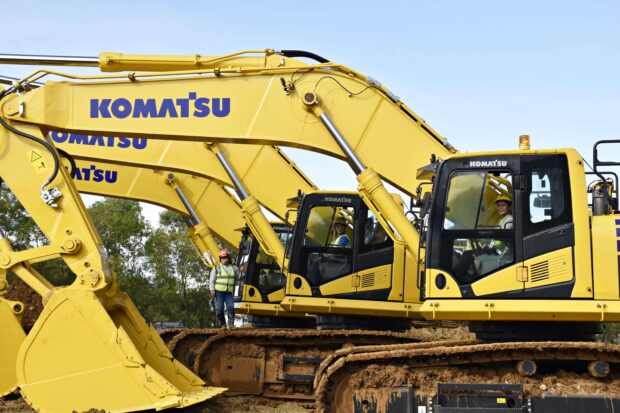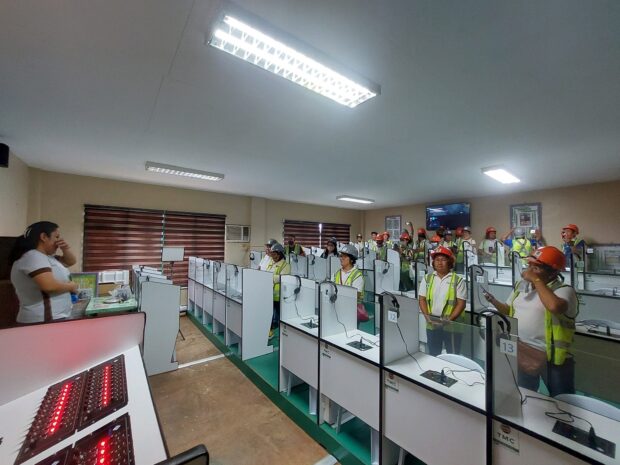Recognizing the positive impact of the mining industry and realizing its full potential
The mining industry, often overlooked and undervalued, is a key enabler of the modern world.
Technological advancements, such as computers, smartphones, and infrastructures, would not exist if not for mined metals and minerals.
Likewise, as the country transitions to cleaner and more efficient energy, metals like nickel and copper also critically make electric vehicle deployment and renewable energy integration into the national grid possible.

The mining sector is a significant contributor to economic growth. It is especially important in rural areas, as it creates job opportunities where alternatives are limited.
The Philippines, boasting $1 trillion (approximately P57.63 trillion) worth of untapped mineral reserves, is the fifth most mineralized country globally. It is also ranked by S&P Global as having the fourth-highest nickel reserves, accounting for 10 percent of the total global nickel reserves.
As the demand for essential minerals surges, the country can harness its geological assets to catalyze comprehensive economic development and bolster overall growth.
Boosting national coffers
Local mining operations create employment opportunities and support local businesses and more importantly, they also contribute to infrastructure development, positively impacting the country’s gross domestic product (GDP) and overall economic growth. This is despite several challenges it faces, especially at the height of the global pandemic.
The Philippine Extractive Industries Transparency Initiative (PH-EITI), chaired by the Department of Finance and composed of representatives of government, industry, and civil society reported that the government’s total reconciled revenue stream from the mining sector amounted to almost P35 billion in 2021.
The figure represented approximately a 35% increase from the previous year’s contribution of P22.83 billion.
As mandated by laws, the fees, and royalties that mining companies remit to the government are allocated to fund critical societal projects and programs to advance people’s lives.
According to the Mines and Geosciences Bureau (MGB), the production value of extracted minerals, which measures their total worth, increased to P317.5 billion in 2022 from P233.3 billion a year before.
Meanwhile, the minerals account report of the Philippine Statistics Authority (PSA) revealed that the country’s overall metallic mineral reserves rose 22 percent in 2022.
In 2022, the valuation of Class A mineral resources, including gold, copper, nickel, and chromite, increased to P491.19 billion from the previous year’s valuation of P402.73 billion.
Class A reserves are commercially recoverable mineral resources deemed economically viable through a well-defined development project or operation.
Creating Livelihoods
Aside from its fiscal impact, the burgeoning mining sector generates jobs, directly benefiting workers and their families.

The industry created livelihoods for over 212,000 workers as of 2023
According to the MGB data, the industry created livelihoods for over 185,000 workers in 2020, despite the challenges of the global pandemic. The figure further increased to over 212,000 in 2023, reflecting a significant improvement of approximately 15 percent.
Beyond these, the mining sector’s livelihood creation has far-reaching effects leading to increased demand for goods and services. Aside from attracting foreign investments, the sector may further contribute to industries such as transportation, construction, and hospitality. This means that for every job in the industry, it is conservatively assumed that about four indirect jobs may be generated in the upstream and downstream sectors. Additionally, the mining sector enhances human capital and develops skills, thereby improving the overall development of the workforce.
As highlighted by the state-run PSA, the growth of the mining sector significantly impacted provincial economies.
PSA data showed that in Region IV-B, comprising the provinces of Mindoro, Marinduque, Romblon, and Palawan, mining contributed a noteworthy 12.4 percent to the total GDP. Similarly, in Region XIII (Caraga), mining’s contribution to GDP reached 12.3 percent.
Meanwhile, in Western Visayas, the mining sector accounted for a substantial 7.3 percent of the total economy.
Committing to sustainable practices
Due to the perceived negative impacts on the environment and local communities, mining projects are always met with strong opposition. This could potentially hinder economic growth and result in job losses, if not addressed.
Yet, despite the hurdles the sector has faced in the past administrations, it continues to provide vast contributions even during the most challenging times such as the pandemic.
To ensure the long-term and equitable distribution of benefits from mining activities, sustainable practices, environmental conservation efforts, and robust community engagement are being practiced.
Now more than ever, mining companies are advocating for responsible mining practices to future-proof the industry, aligned with the stringent regulations established by the Mining Act of the Philippines or the Republic Act 7942 as implemented by DENR Administrative Order 2010-21.
To mitigate the potential environmental impacts of mining operations, frameworks like the Environmental Protection and Enhancement Program ensure safeguards are implemented throughout the mine’s lifespan, even before mining begins.
Additionally, the Social Development and Management Program guides mining companies in providing sustainable opportunities to communities that enhance their quality of life.
By adhering to rigorous regulations and adopting best practices, the mining industry can minimize environmental impacts, preserve biodiversity, and promote inclusive development for all involved stakeholders.
The mining sector stands as a catalyst for a brighter future—unlocking development, boosting local economies, creating jobs, and driving infrastructure expansion.
Looking ahead, collaborative efforts between government entities, industry stakeholders, and local communities are imperative to fully realize the mining sector’s potential as an inclusive and sustainable nationwide economic growth driver.
ADVT.
This article is brought to you by the National Unified Information Education Communication Program, initiated by the Mines and Geosciences Bureau and being implemented by six metallic and non-metallic industry associations.